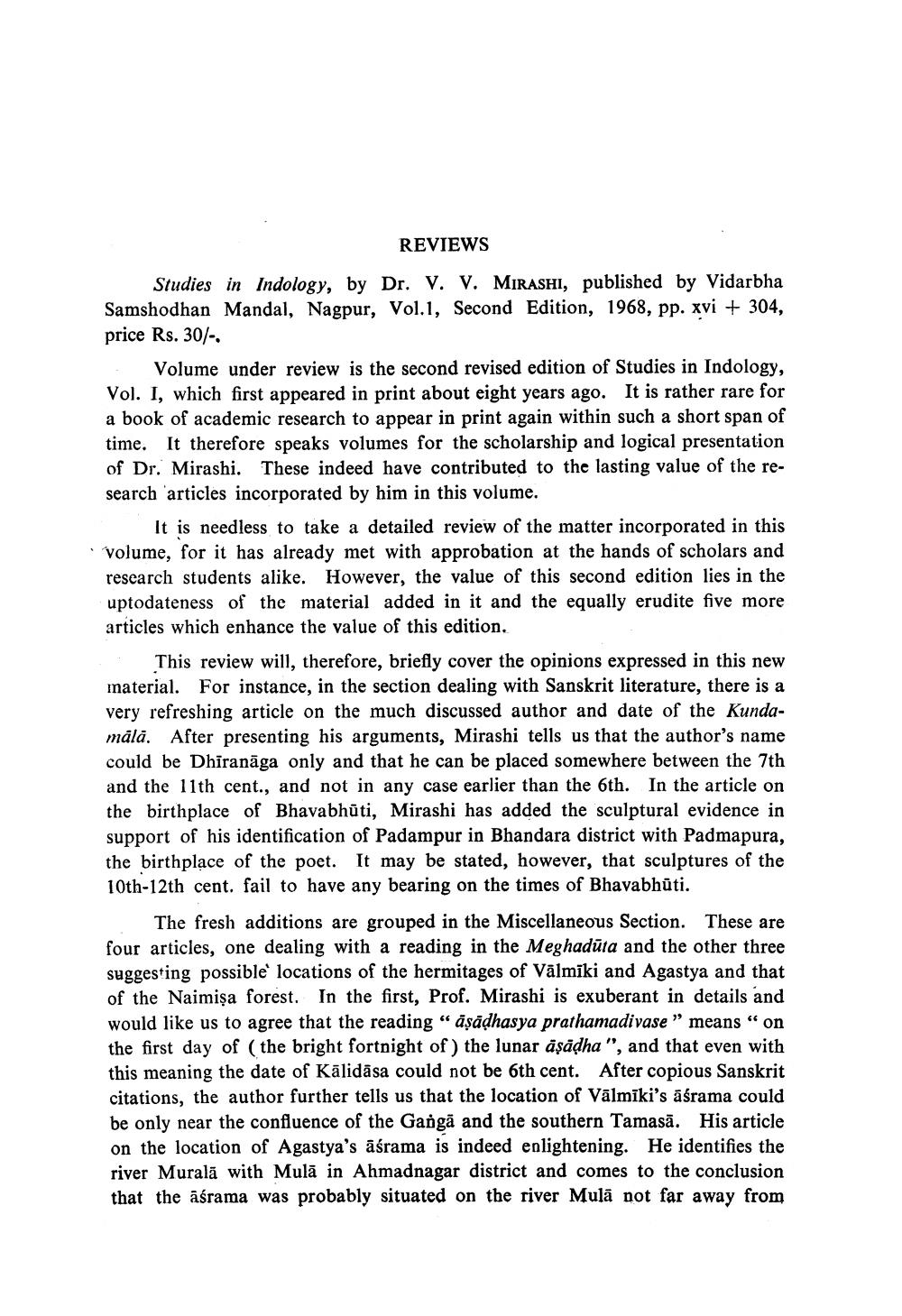Book Title: Reviews Of Studies In Indology Author(s): J S Jetly Publisher: J S Jetly View full book textPage 1
________________ REVIEWS Studies in Indology, by Dr. V. V. MIRASHI, published by Vidarbha Samshodhan Mandal, Nagpur, Vol.1, Second Edition, 1968, pp. xvi + 304, price Rs. 30/-, Volume under review is the second revised edition of Studies in Indology, Vol. I, which first appeared in print about eight years ago. It is rather rare for a book of academic research to appear in print again within such a short span of time. It therefore speaks volumes for the scholarship and logical presentation of Dr. Mirashi. These indeed have contributed to the lasting value of the research 'articles incorporated by him in this volume. It is needless to take a detailed review of the matter incorporated in this volume, for it has already met with approbation at the hands of scholars and research students alike. However, the value of this second edition lies in the uptodateness of the material added in it and the equally erudite five more articles which enhance the value of this edition. This review will, therefore, briefly cover the opinions expressed in this new material. For instance, in the section dealing with Sanskrit literature, there is a very refreshing article on the much discussed author and date of the Kundamála. After presenting his arguments, Mirashi tells us that the author's name could be Dhiranāga only and that he can be placed somewhere between the 7th and the 11th cent., and not in any case earlier than the 6th. In the article on the birthplace of Bhavabhūti, Mirashi has added the sculptural evidence in support of his identification of Padampur in Bhandara district with Padmapura, the birthplace of the poet. It may be stated, however, that sculptures of the 10th-12th cent. fail to have any bearing on the times of Bhavabhūti. The fresh additions are grouped in the Miscellaneous Section. These are four articles, one dealing with a reading in the Meghadūta and the other three suggesting possible locations of the hermitages of Vālmīki and Agastya and that of the Naimisa forest. In the first, Prof. Mirashi is exuberant in details and would like us to agree that the reading “aşadhasya prathamadivase" means “ on the first day of the bright fortnight of) the lunar äşādha ", and that even with this meaning the date of Kālidāsa could not be 6th cent. After copious Sanskrit citations, the author further tells us that the location of Vālmīki's āśrama could be only near the confluence of the Gangā and the southern Tamasā. His article on the location of Agastya's āśrama is indeed enlightening. He identifies the river Muralā with Mulā in Ahmadnagar district and comes to the conclusion that the aśrama was probably situated on the river Mulā not far away fromPage Navigation
1 2 3 4 5 6 7 8 9
